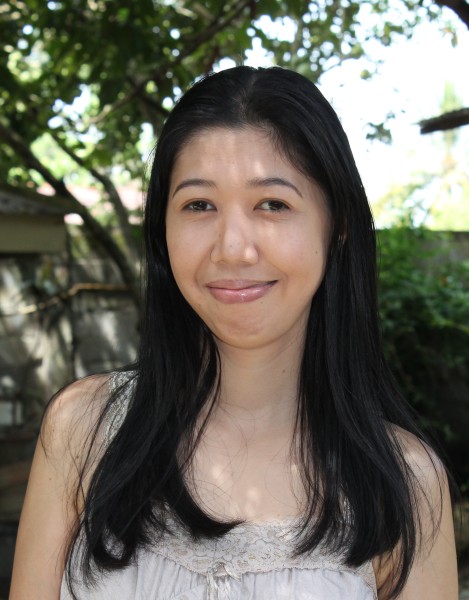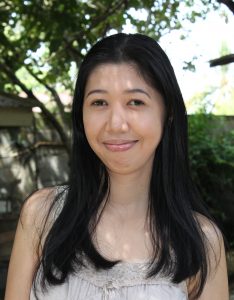
SmokeLong’s Global Flash Series endeavors to spotlight non-Anglo writing communities around the world. Until November 17, Kristine Ong Muslim will be reading submissions in Filipino and will choose one story to feature in our December issue. As always, the Global Flash story will be published in the original language as well as in English.
__________________________
Kristine, thank you so much for the work you’ve already done in preparing for the Filipino call for submissions at SmokeLong. I’ve known you for several years and have read and reviewed your work, but I’ve only recently visited The Philippines. It was a very short, yet amazing trip to Palawan. Can you tell us something about The Philippines that most people don’t know?
Thank you for having me here, Chris. I’m glad to hear you’ve enjoyed your trip to Palawan. That part of the Philippine archipelago has been popularized as the ‘last ecological frontier,’ so it’s a shame there’s recent news of Palawan residents rightfully opposing the construction of a coal-fired power plant, a project that has been given a go-ahead in the form of an environmental agency compliance certificate by the Duterte government.
I’m not so sure if this tidbit of information about the Philippines is widely known, but we have over 150 languages here, and most Filipinos, if not all, are multilingual. The concept of Filipino identity itself is complex, and may be hard to define even in broad, encompassing terms. This is why I’m excited about and thankful for this rare opportunity to select work to translate for the Global Flash Series. I’m looking forward to negotiating the meanings of compressed Filipino-language source texts that are likely to hold all sorts of code-switching and linguistic facility challenges for presentation in translated form to SmokeLong Quarterly’s readership.
Judging by the response to your initial tweet about this call for submissions, your literary community is thriving.
It is, thank you! And I’m thankful the initial announcement received relatively good traction. There has been growth, too, most especially in the Philippine independent publishing scene. It is thriving, not just in terms of increasingly diversifying aesthetic sensibilities that embody the present and the future, the future being a bleak prospect because of the climate crisis. Also, I’ve seen—and maybe I’m lucky to see it because I want to be part of its propagation—a shift away from the formalist vacuum, which is heavy on prettified language and the weight of tradition, a source of prestige, but short on what matters: an attempt to interrogate the role of one’s literary practice in relation to actions that destabilize the unjust dynamics of power in the world. And, this is very difficult to do, even impossible, because it demands consistency. It demands consistency in values, in one’s public stand on issues. It demands consistency even in cases when one’s personal interests need to be pushed aside to clear the path for justice. It also demands refusal to self-identify mainly as an author, but to demystify, to demythologize the author’s importance, because it is far more important to be a citizen of the world. Thanks to numerous small presses and writers’ collectives in the Philippines, more and more younger Filipino writers turn to writing that seeks and is driven by sociopolitical engagement, and sincerely try to be discontented with writing as their only method of participation in the community’s struggle.
The Literature section on The Philippines’ Wikipedia page lists only male writers. I assume this is an egregious oversight. Could you correct this for us here?
That list is likely outdated. Also, some Filipino writers may not be interested in creating and getting approval for their Wikipedia shrine page. However, yes, there is, indeed, an imbalance in gender distribution. The country’s most prominent writers are men; the Penguin Classics representation of the Philippines, for example, does not have a book authored by a woman. But I believe many stakeholders in the Philippine literary community are doing something to correct this imbalance. There’s already a national creative writing workshop for Philippine LGBTQ fiction. Add to that a literary resistance movement in the form of the small press, Gantala Press, which publishes books by women.
In Philippine graphic literature, the most critically acclaimed graphic novelist is the pseudonymous Emiliana Kampilan. The poet Conchitina Cruz wrote essays that have attracted a lot of interest in recent years; Cruz’s paper, “The (Mis)Education of the Filipino Writer: The Tiempo Age and Institutionalized Creative Writing in the Philippines,” continues to generate necessary discourse and has been influential to me. Two of my most favorite Filipino short story writers are Francezca Kwe (for English) and Mayette Bayuga (for Filipino), and I hope their works receive more attention. I am also working with some friends, who are also writers and editors, in editing and translating stories for a possible series of Philippine fiction anthologies, and one of our goals is to find great work by women writers for translation into English. One notable example is John Bengan’s brilliant translation from the Visayan of the short fiction of Joy Serrano-Quijano, an indigenous writer. I can’t wait to see it published in one of our book projects and in an upcoming Words without Borders issue where I am guest coeditor.
You co-edited Sigwa: Climate Fiction Anthology from the Philippines. When is this coming out and how can people buy it?
Sigwa: Climate Fiction Anthology from the Philippines will be released either towards the end of 2019 or in early 2020. Our publisher, Polytechnic University of the Philippines Press, is a state-funded university press, and the distribution of Philippine-published books is normally limited to the Philippines. But we’ll see about finding ways to reach people outside the country who want to buy copies of the book.
I know many Filipino writers who want to talk and write about climate change, because these are some of the ways to seek accountability and discuss solutions. Filipino writers are also uniquely positioned to talk about the ecological crisis, because we are, more or less, on the front line. Philippine seawater levels are going up three times more rapidly than the 3.1 cm per decade global average rate, and the Philippines has the world’s highest death toll for environmental defenders.
The collective energy of the Philippine literary community can be put to good use. In fact, a novel that offers an unflinching look into the chaotic emotional landscape of environmental disaster trauma was just released by the Ateneo de Naga University Press. The title of the novel is Remains, and it is by Daryll Delgado, who has a story in Sigwa: Climate Fiction Anthology from the Philippines. Daryll Delgado’s Remains is made up of fragmented accounts with some sections written in Waray, one of the native languages in the Philippines, and is narrated to mirror the anxious gasps, the realities of people finding their way out of a dark memory tunnel.
What are the challenges of translating Filipino into English? How is Filipino influenced by the other languages spoken in The Philippines?
There are many Filipino words and concepts that are difficult to translate, and it is not only because they lack English equivalents. Their context is specific only to Filipino culture, which does not occur as a homogenized packet of attributes and is hard to pin down. As for the influence of other languages in the Philippines in the formation and evolution of Filipino, I barely understand even the basics of the linguistics involved, but on the surface, Filipino’s grammatical structure is based on Tagalog, and it is—hypothetically—fortified with terms adopted from other native languages in the country, as well as terms borrowed from various disciplines such as the sciences. Tagalog, which forms the basis of Filipino, occurs in different versions across the country. There’s a version of Tagalog here in the south, one that is stylized with English, Cebuano, sometimes even blended with Ilonggo. Additionally, the southern version of Tagalog is different from, say, the Tagalog of Manila.
What kind of story will you be looking for the next couple of months?
I don’t know, probably stories that demand close attention and are revelatory at every turn—I love flash fictions that maximize their constrained length this way. Here’s one example by E. San Juan, Jr. No sentences are wasted. Even the arrangement is well thought out and designed to disorient, escalate to a crescendo—and understandably, difficult to translate. I’m sure the submission queue would yield great material for translation.
_______________________________
 Kristine Ong Muslim, guest editor for Filipino, is the author of nine books, including the fiction collections Age of Blight (Unnamed Press, 2016), Butterfly Dream (Snuggly Books, 2016), and The Drone Outside (Eibonvale Press, 2017). Her short stories have been published in Conjunctions, The Cincinnati Review, Tin House, and World Literature Today. An editor of two anthologies—with Nalo Hopkinson for the British Fantasy Award-winning People of Colo(u)r Destroy Science Fiction and with Paolo Enrico Melendez for Sigwa: Climate Fiction Anthology from the Philippines, Muslim has translated the work of Mesándel Virtusio Arguelles, and soon, the poetry of M. J. Cagumbay Tumamac. She grew up and continues to live in a rural town in southern Philippines.
Kristine Ong Muslim, guest editor for Filipino, is the author of nine books, including the fiction collections Age of Blight (Unnamed Press, 2016), Butterfly Dream (Snuggly Books, 2016), and The Drone Outside (Eibonvale Press, 2017). Her short stories have been published in Conjunctions, The Cincinnati Review, Tin House, and World Literature Today. An editor of two anthologies—with Nalo Hopkinson for the British Fantasy Award-winning People of Colo(u)r Destroy Science Fiction and with Paolo Enrico Melendez for Sigwa: Climate Fiction Anthology from the Philippines, Muslim has translated the work of Mesándel Virtusio Arguelles, and soon, the poetry of M. J. Cagumbay Tumamac. She grew up and continues to live in a rural town in southern Philippines.

 The core workshop of SmokeLong Fitness is all in writing, so you can take part from anywhere at anytime. We are excited about creating a supportive, consistent and structured environment for flash writers to work on their craft in a community. We are thrilled and proud to say that our workshop participants have won, placed, or been listed in every major flash competition. Community works.
The core workshop of SmokeLong Fitness is all in writing, so you can take part from anywhere at anytime. We are excited about creating a supportive, consistent and structured environment for flash writers to work on their craft in a community. We are thrilled and proud to say that our workshop participants have won, placed, or been listed in every major flash competition. Community works.